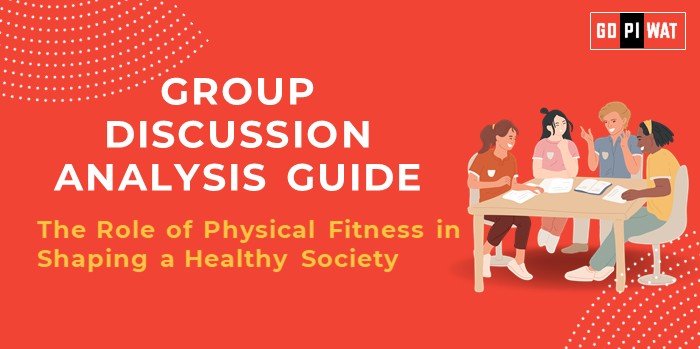📋 Group Discussion (GD) Analysis Guide: The Role of Physical Fitness in Shaping a Healthy Society
🌟 Introduction to Physical Fitness
Context: Globally, the shift towards sedentary lifestyles has led to an alarming rise in lifestyle diseases like obesity, diabetes, and cardiovascular disorders. Recognizing physical fitness as the cornerstone of a healthy society is increasingly crucial for governments, corporates, and individuals alike.
Background: The importance of fitness traces back to ancient civilizations where physical activity was integrated into daily life. Modern times demand structured efforts, such as fitness policies and programs, to counter sedentary habits.
📊 Quick Facts and Key Statistics
- 🌍 Global Physical Inactivity: Over 1.4 billion adults are insufficiently active, according to WHO.
- 💰 Economic Impact: Non-communicable diseases related to inactivity cost $2 trillion annually worldwide.
- 🇮🇳 India’s Fitness Statistics: Only 22% of Indians engage in adequate physical activity (National Family Health Survey).
- 🏢 Corporate Wellness Trend: 70% of global companies are investing in employee wellness programs, highlighting the rising recognition of fitness in the workplace.
🔑 Stakeholders and Their Roles
- Government: Formulates policies promoting fitness, e.g., Fit India Movement.
- Healthcare Providers: Advocate and enable preventive healthcare practices.
- Corporates: Integrate employee wellness initiatives to boost productivity.
- NGOs and Fitness Organizations: Spread awareness and offer affordable fitness solutions.
- Individuals: Adopt active lifestyles to reduce personal health risks.
🏆 Achievements and Challenges
🎯 Achievements:
- Policy Initiatives: Launch of the Fit India Movement in 2019 raised awareness across demographics.
- Corporate Fitness Programs: Increased adoption in MNCs, improving employee health and productivity.
- Technological Integration: Fitness apps and wearables have democratized access to fitness monitoring.
⚠️ Challenges:
- Urban-Rural Divide: Limited access to gyms or fitness parks in rural areas.
- Economic Constraints: Fitness services remain unaffordable for lower-income groups.
- Cultural Barriers: Lack of prioritization of fitness in traditional lifestyles.
Global Comparisons: Scandinavian countries (e.g., Finland) demonstrate best practices, with over 70% of citizens engaging in regular physical activity.
Case Studies: Kerala’s public fitness centers have been successful in encouraging mass participation.
📖 Structured Arguments for Discussion
- 💪 Supporting Stance: “Investing in physical fitness reduces healthcare costs and enhances national productivity.”
- 🛑 Opposing Stance: “Fitness policies may be ineffective without addressing broader socio-economic inequalities.”
- ⚖️ Balanced Perspective: “Physical fitness is vital, but its impact is contingent on systemic support and accessibility.”
✨ Effective Discussion Approaches
- Opening Approaches:
- Start with a statistic: “Inactivity contributes to 5 million deaths annually worldwide.”
- Use a case study: “Scandinavian countries show how policy-driven fitness can reduce public health costs.”
- Counter-Argument Handling:
- Propose public-private partnerships for affordable fitness infrastructure to counter economic constraints.
- Highlight successful awareness campaigns to address cultural resistance.
📋 Strategic Analysis of Strengths and Weaknesses
✔️ Strengths:
- Improved awareness through campaigns.
- Technology-driven fitness tools.
- Government focus with initiatives like the Fit India Movement.
❌ Weaknesses:
- Infrastructural deficits.
- Lack of inclusivity in rural areas.
💡 Opportunities:
- Integration with educational curriculums.
- Rising corporate wellness budgets.
⚠️ Threats:
- Policy implementation gaps.
- Health risks from unregulated fitness trends.
📚 Connecting with B-School Applications
- Real-World Applications: Fitness as a CSR initiative or public health project for consulting roles.
- Sample Questions:
- “How can fitness programs reduce national healthcare costs?”
- “Evaluate the role of technology in promoting physical fitness.”
- Insights for Students: Opportunities for fitness-related projects in operations and marketing or internships in wellness-focused organizations.


